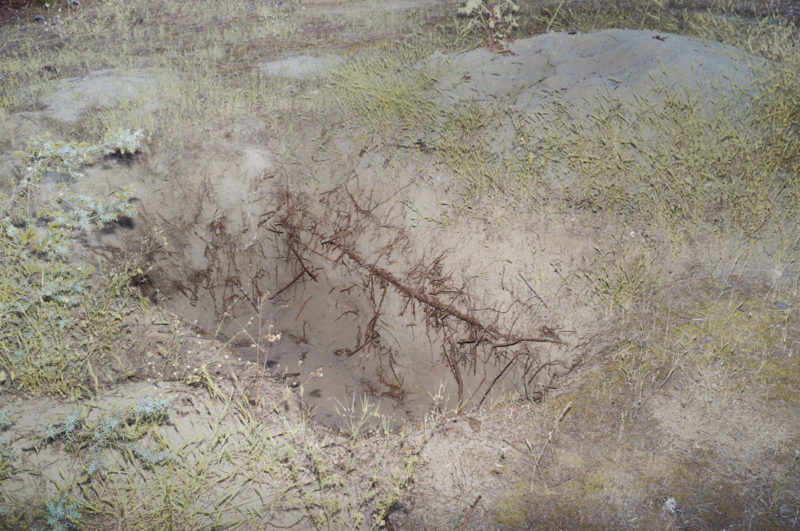“Every landscape can be decomposed in an infinite number of minor ones,” writes Petros Koublis about his Minor Landscapes. It didn’t occur to me to look at these photographs as landscapes, the title of the series notwithstanding. Of course, many of them are, in a somewhat obvious sense. What drew me to this work was the fact that it presented me with a fairly unique view of this world that I had not seen before. Not seen before in terms of the artistic vision behind this work.
There is something very interesting going on in these photographs. Looking through them, I experienced what I call “the wait-a-minute effect”: You look and look and don’t think too much about it, and at some stage you mutter “wait a minute” and go back to re-look (if you don’t like the term “wait-a-minute effect” maybe you’ll prefer “the what-was-that? effect”). There’s something there to somehow catch your attention. I realize that’s not a very elegant way to describe these photographs’ impact, but it seems to get quite close to the experience of looking at them.





A photograph can’t be too obviously interesting or flashy to lead to the wait-a-minute effect. That’s why most editorial photography looks very stale a few years later: It’s just so obvious. It looks good next to some article about why soy milk is good for you or about some soon-to-be-forgotten actor in some ever-sooner-to-be-forgotten movie, and there’s absolutely nothing wrong with that. But that’s not what I’m interested in when I look at photographs.
I like photographs that have a depth, a subversive depth to be more precise. Photographs where something doesn’t feel right, or where something doesn’t look like what it seems to be, albeit in a way that doesn’t become obvious straight away. It would be way too simple to say (actually: claim) that that’s what art photography does, because a lot of art photography doesn’t.
A lot of art photography is what I call “art editorial.” It’s essentially editorial photography, except there is no story to support other than the one in the photographs, the one carefully defined by the photographer. Just like in the case of editorial photography, there’s nothing wrong with art-editorial photography. It’s just not terribly interesting in the long run.
Koublis’ photographs, in contrast, have none of that. Instead, they deal with mystique, often in ways that at first sight makes it seem there isn’t much going on. But there is. It’s a topsy-turvy world where things are not what they seem to be (with images thrown in where things are in fact what they seem to be for good measure). Photography always means looking. It means looking when you take photographs, and it means looking when engaging with photographs. Petros Koublis makes us look, and then look again.
